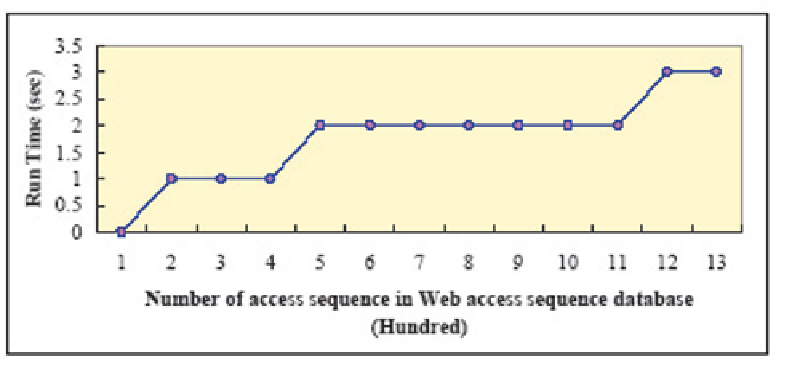Database Reference
In-Depth Information
Figure 21: Experimental results
Performance Evaluation
To access the relative performance of the algorithm for discovering path traversal
patterns, we performed several experiments on an IBM compatible computer with a Mobile
Intel Pentium III CPU clock rate of 750 MHz, 128 Megabytes of main memory, and running
Windows 2000 Professional. The data resided in the FAT 32 fi le system and were stored
on a 20 Gigabytes Ultra-ATA hard disk. The relational database is Sybase SQL Anywhere
5.0 for data storage. All programs are written in Microsoft Visual Basic 6.0. The web log
covers the year of 2001 and its size is 102 MB.
The experimental result is shown in Figure 21. The FP-tree shows linear scalability with
the number of access sequences in the databases. In large databases, it is a good candidate
to use for access patterns discovery. In the case study, we are interested in fi ve web pages.
The total number of combinations of the traversal patterns is (
5
CCC
+
5
C
4
C
2
C
+
5
C
1
=
325) and the maximum depth of the FP-tree is 5. The FP-tree can be constructed within
several seconds even though the numbers of transactions are greater than 10K. Thus, it is
very effi cient for online analysis purposes. The cost of FP-tree construction is O (| number
of frequent items in Transaction| = 5). In general, FP-tree is an effective structure facilitating
web path traversal patterns mining.
With certain extensions, the methodology of FP-tree can be applied to perform many
web usage mining tasks effi ciently, such as web user path traversal patterns mining.
C
4
C
+
5
C
3
C
3
C
+
5
C
2
SUMMARY
In summary, an OLAM methodology is proposed to provide the means for management
investigation on e-customers' click behavior, so as to further analyze their scale of preference
and habit on web site surfi ng for the web advertisement planning and design. A mechanism
of automating the view of the data warehousing has been introduced. The view is provided




